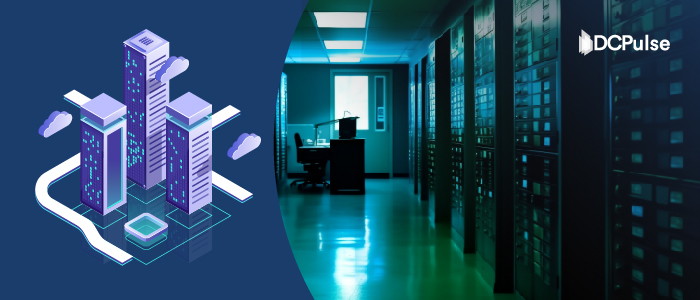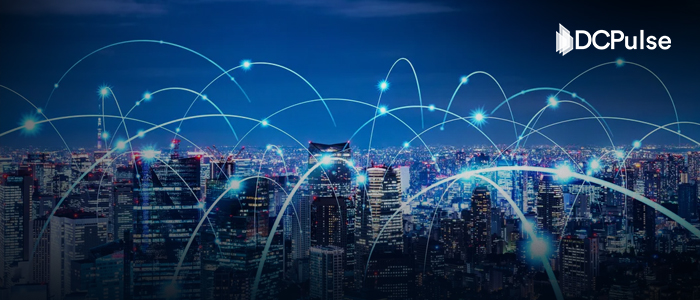In an era defined by on-demand analytics, real-time streaming, and artificial intelligence, it’s easy to overlook the physical backbone of our digital world. As of March 2025, approximately 11,800 data centers will be powering applications across the globe, concentrated in a handful of nations and cities that dictate latency, compliance, and resilience. Such stakes are reflected in national totals, where heavyweight players not only host the most facilities but also set the benchmark for performance, regulatory alignment, and hyperscale readiness.
Global data-center distribution is anything but even. The United States alone hosts 5,426 data centers, more than the next nine countries combined. Germany follows with 529, the United Kingdom with 523, China with 449, and France with 322, cementing their roles as both commercial heavyweights and leaders in sovereign cloud strategy.
Top 10 Countries by Data Center Count (March 2025)
|
Rank |
Country |
Data Centers |
|
1 |
United States |
5,426 |
|
2 |
Germany |
529 |
|
3 |
United Kingdom |
523 |
|
4 |
China |
449 |
|
5 |
France |
322 |
|
6 |
Canada |
322 |
|
7 |
Netherlands |
281 |
|
8 |
Australia |
278 |
|
9 |
Japan |
211 |
|
10 |
Brazil |
151 |
-01.jpg)
While national totals highlight global distribution, the real-world implications for latency, resilience, and interconnection come into sharper focus at the city level.
Ashburn corridor, Northern Virginia, often known as “Data Center Alley,” tops the list with over 1,020 centers, anchored by major interconnection giants like Equinix and Digital Realty. The region remains a critical hub for hyperscale and enterprise traffic.
Singapore ranks among the world’s most connected digital hubs, with over 210 data centers strengthened by six submarine cable landings and regulatory policies that prioritize network density and regional, low-latency interconnection.
In Europe, London leads with nearly 190 colocation facilities, driven by its role in demand from financial services and multinational corporations. Frankfurt follows closely, with more than 160 centers, built around DE-CIX, one of the world’s largest internet exchange points.
Amsterdam, Paris, and Sydney round out the top five global cities by facility count, combining dense fiber networks, national cloud initiatives, and increasing AI-related infrastructure demand.
Top 10 Data Center Cities by Facility Count (March 2025)
|
Rank |
Cities |
Data Centers |
|
1 |
Ashburn, VA |
1,020 |
|
2 |
Singapore |
210 |
|
3 |
London |
190 |
|
4 |
Frankfurt |
160 |
|
5 |
Amsterdam |
120 |
|
6 |
Paris |
110 |
|
7 |
Sydney |
85 |
|
8 |
Dublin |
75 |
|
9 |
Hong Kong |
70 |
|
10 |
Tokyo |
65 |
-01_(1).jpg)
As leading metros reach their capacity, a fresh wave of regional players is coming online, fuelled by regulation, sustainability, and hyperscale capital.
This decentralization is reshaping the global data center map, as markets once considered peripheral now attract core workloads, new interconnection hubs, and sovereign cloud deployments.
Beyond the dominant global hubs, a new generation of data center markets is emerging, reshaping the map with regional demand, regulatory shifts, and infrastructure investment.
Fastest-Growing Data Center Markets (CAGR 2021–2025)
|
Sr. No. |
Data Center Markets |
CAGR (5%) |
|
1 |
India |
20 % |
|
2 |
Malaysia |
15 % |
|
3 |
Brazil |
13 % |
|
4 |
Indonesia |
12 % |
|
5 |
Vietnam |
12 % |
.jpg)
While CAGR reveals where buildouts are happening fastest, the true momentum is being shaped by four converging forces: density-driven design, sustainability mandates, grid limitations, and evolving national regulatory pressures. These forces don’t just influence site selection; they’re also redefining what it takes to operate at hyperscale in emerging markets.
These dynamics are already playing out across fast-growing regions.
In India, installed capacity is on track to nearly double, from 0.9 GW to nearly 2 GW by 2026, driven by strict data localization laws and hyperscale cloud expansions.
Brazil, the core infrastructure hub of Latin America, is experiencing a 13% annual growth rate, fuelled by renewable energy incentives and a growing digital consumer base.
In Southeast Asia, Johor province has emerged as Malaysia’s premier hyperscale corridor, reporting a 30% surge in new builds over just two years.
Edge deployments are also gaining ground in Vietnam and Indonesia, with both markets projected to grow at double-digit rates through 2027.
Meanwhile, Saudi Arabia’s Vision 2030 megaprojects are generating over 250 MW of new capacity in 2025 alone, firmly positioning the Gulf as a rising global infrastructure hub.
At the same time, global data center investments are accelerating at an unprecedented scale, reshaping both financial models and infrastructure priorities.
According to estimates from Gartner and IDC, global spending rose from $178 billion in 2020 to $212 billion by 2024, with projections pointing toward $250 billion by 2026. This sharp climb is driven by the explosive demand for generative AI, edge computing, and retrofitting legacy sites to support dense, power-intensive workloads.
Capital is rapidly flowing into next-generation cooling technologies, intelligent power management systems, and geographically diversified builds. As a result, infrastructure leaders now face a steeply rising cost curve, one increasingly shaped by thermal efficiency, carbon alignment, and energy resilience.
Global Data Center Spending (2020-2026)
.jpg)
Several engineering and regulatory trends now dictate where new data centers are built. The rise of AI and high-density computing requires advanced liquid-cooling systems capable of handling racks drawing more than 30 kW each.
Meanwhile, carbon-reduction mandates across Europe and North America tie site selection to local renewable-energy availability, encouraging developers to pursue greenfield facilities in cooler climates.
An increase in latency-sensitive applications, from virtual-reality healthcare tools to autonomous-vehicle networks, is also leading to the development of micro-data centers at the edge, with over 40 percent of new projects in 2024 expected to be under 1 MW capacity.
Finally, strict data-sovereignty laws in the EU, India, and Brazil are forcing providers to operate within national and sometimes regional borders. Together, these forces are reshaping site selection across the globe.
John Dinsdale, Chief Analyst at Synergy Research Group, captured the industry’s AI-driven transformation in June 2025, he said,
“The dramatic rise of AI technology and applications is now providing an added impetus.”
With this momentum comes new challenges. Even the world’s leading hubs are facing growing headwinds, from power constraints and cooling complexity to land scarcity and community resistance.
This surge is redefining what it means to be a Tier 1 data center hub, shifting emphasis from traditional geographic advantages to GPU density, energy availability, and next-gen cooling innovation.
But even the world’s most advanced hubs are encountering new headwinds. In North America, power-hungry workloads strain already congested grids and face mounting permitting delays.
Europe grapples with land scarcity and lengthy environmental approval cycles. In Asia Pacific, high construction costs and shortages in skilled labor are extending deployment timelines.
Latin America struggles with grid volatility and water usage constraints, while continues to face barriers around fiber connectivity and infrastructure financing.
For infrastructure leaders, the message is clear: geography still governs performance, compliance, and resilience, but it’s no longer the only axis. Diversifying footprints across both established and emerging markets is now essential to balance latency needs, sustainability goals, and regulatory demands.
Aligning site strategies with carbon targets and local incentives programs, and energy resilience isn't just cost optimization; it’s reputational insurance in an era of climate scrutiny and geopolitical volatility.
In the cloud era, the data center is no longer a backend utility; it’s a strategic cornerstone: smart, sustainable, and global by design.





